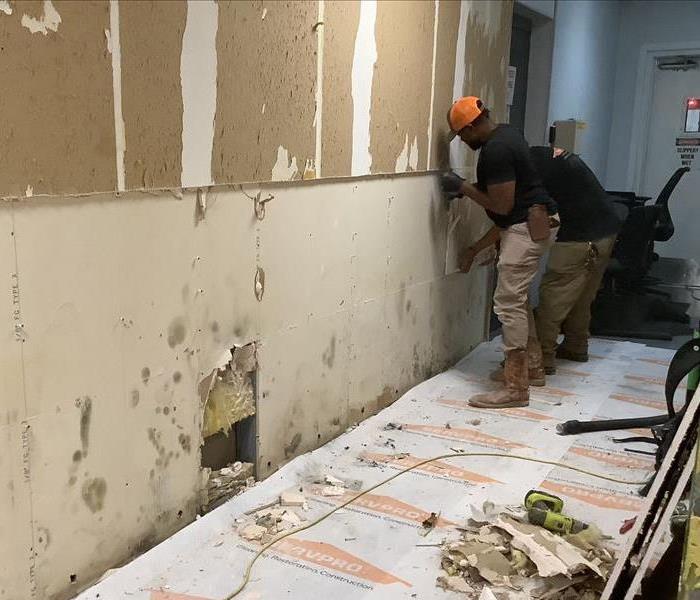SERVPRO of Balch Springs Mold Experts
12/27/2023 (Permalink)
Mold damage can manifest in various ways, and its impact can range from aesthetic concerns to serious health issues. Different types of mold damage may occur in homes or buildings, and they are often associated with water damage or excessive moisture. Here are common types of mold damage:
Surface Mold:
Appearance: The most common type of mold damage is visible surface mold growth. This may appear as black, green, brown, or white spots on walls, ceilings, floors, or other surfaces.
Causes: Surface mold often occurs in areas with high humidity, condensation, or water leaks. It can develop on various materials, including drywall, wood, carpet, and fabrics.
Structural Damage:
Weakening of Materials: Prolonged exposure to mold can weaken structural materials such as wood or drywall. This can lead to compromised structural integrity and pose safety risks.
Warped or Discolored Surfaces: Mold can cause materials to warp, discolor, or develop a fuzzy or powdery texture.
Odor Issues:
Musty Smell: Mold growth is often accompanied by a distinctive musty odor. This odor can be persistent and challenging to eliminate without addressing the underlying mold problem.
Airborne Particles: Mold spores can become airborne, contributing to the musty smell and potentially causing respiratory issues.
Health Effects:
Respiratory Issues: Exposure to mold can cause or exacerbate respiratory problems, allergies, or asthma in sensitive individuals.
Allergic Reactions: Some people may experience allergic reactions to mold, including sneezing, coughing, skin irritation, and watery eyes.
Hidden Mold:
Behind Walls or Ceilings: Mold growth is not always visible. It can thrive in hidden areas such as behind walls, ceilings, or under flooring.
Detectable by Odor: Hidden mold may be detected by a musty odor even if it is not immediately visible.
Damage to Personal Belongings:
Clothing and Fabrics: Mold can damage clothing, linens, and other fabric-based items. It often leaves stains and a musty smell that is challenging to remove.
Books and Paper: Mold can grow on paper-based materials, including books and documents, leading to discoloration, warping, and deterioration.
HVAC System Contamination:
Ductwork and Ventilation: Mold spores can contaminate HVAC (heating, ventilation, and air conditioning) systems, spreading throughout the home and potentially causing health issues.
Reduced System Efficiency: Mold growth in HVAC systems can reduce the system's efficiency and contribute to higher energy costs.
Mold Stains:
Discoloration: Mold can cause visible stains on surfaces. These stains may be difficult to remove, even after the mold is cleaned, and can affect the aesthetic appearance of the affected area.
Toxic Mold:
Mycotoxins: Some molds produce mycotoxins, which are toxic substances that can pose health risks. Stachybotrys chartarum, often referred to as "black mold," is one example known for producing mycotoxins.
Recurring Mold Growth:
Persistent Issues: If the root cause of water damage or excessive moisture is not addressed, mold growth can recur even after cleaning. Addressing the source of moisture is crucial for preventing future mold problems.
It's essential to address mold issues promptly and effectively. Professional mold remediation may be necessary for extensive mold damage or when dealing with toxic molds. Identifying and addressing the underlying causes of water damage or excess humidity is key to preventing mold growth and minimizing its impact. If you suspect mold damage in your home, consider consulting with a qualified mold remediation professional for a thorough assessment and remediation plan.



 24/7 Emergency Service
24/7 Emergency Service
